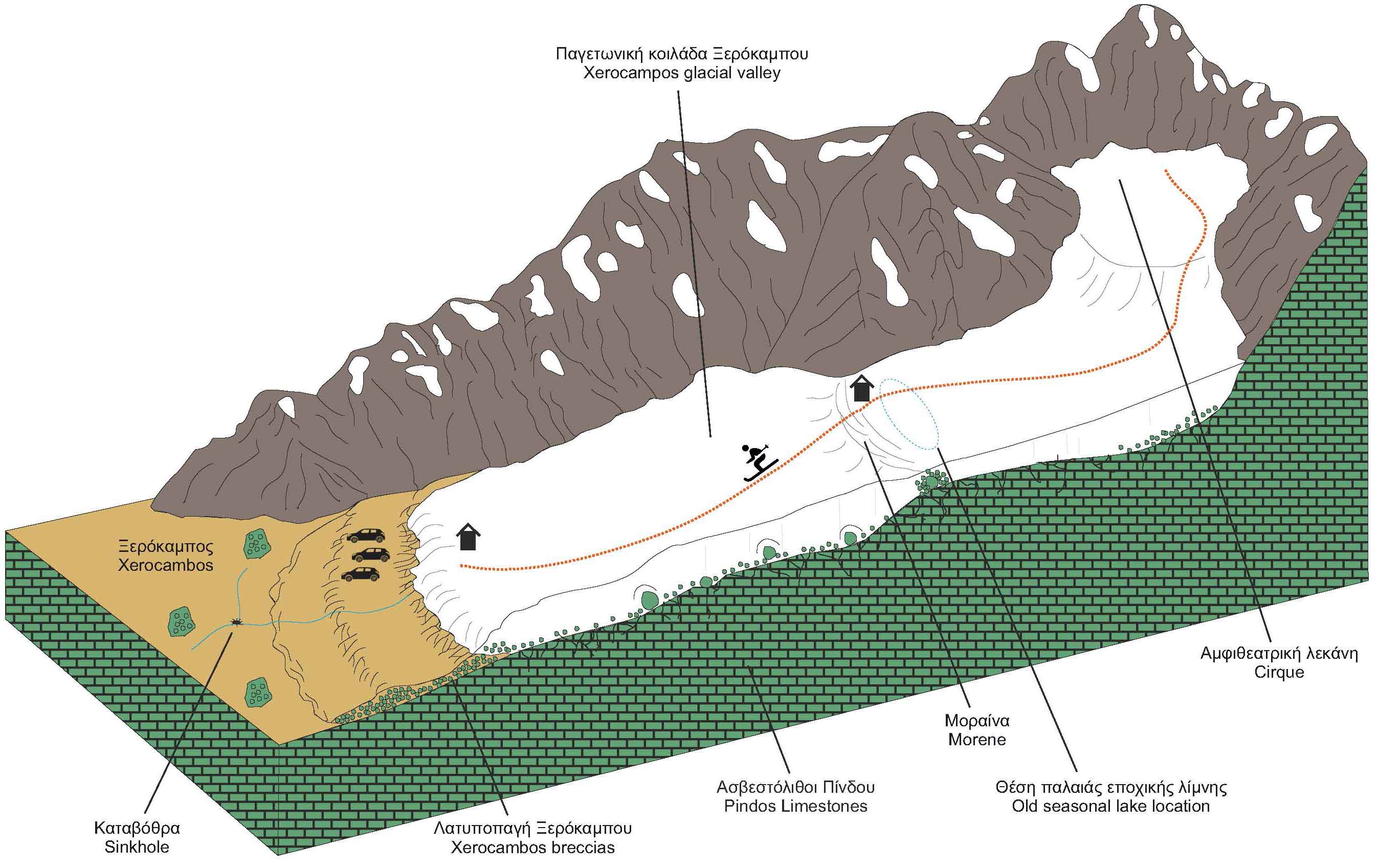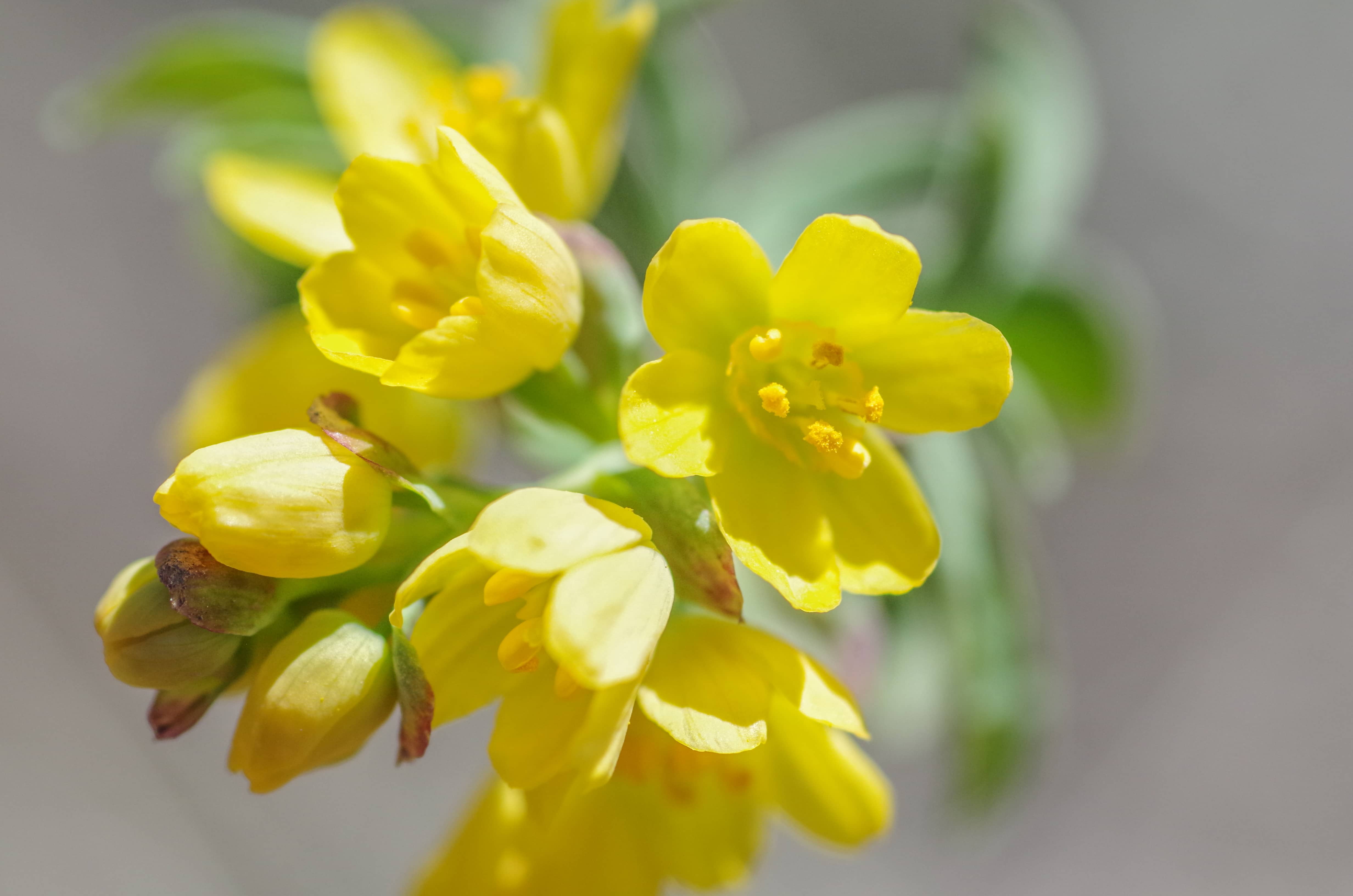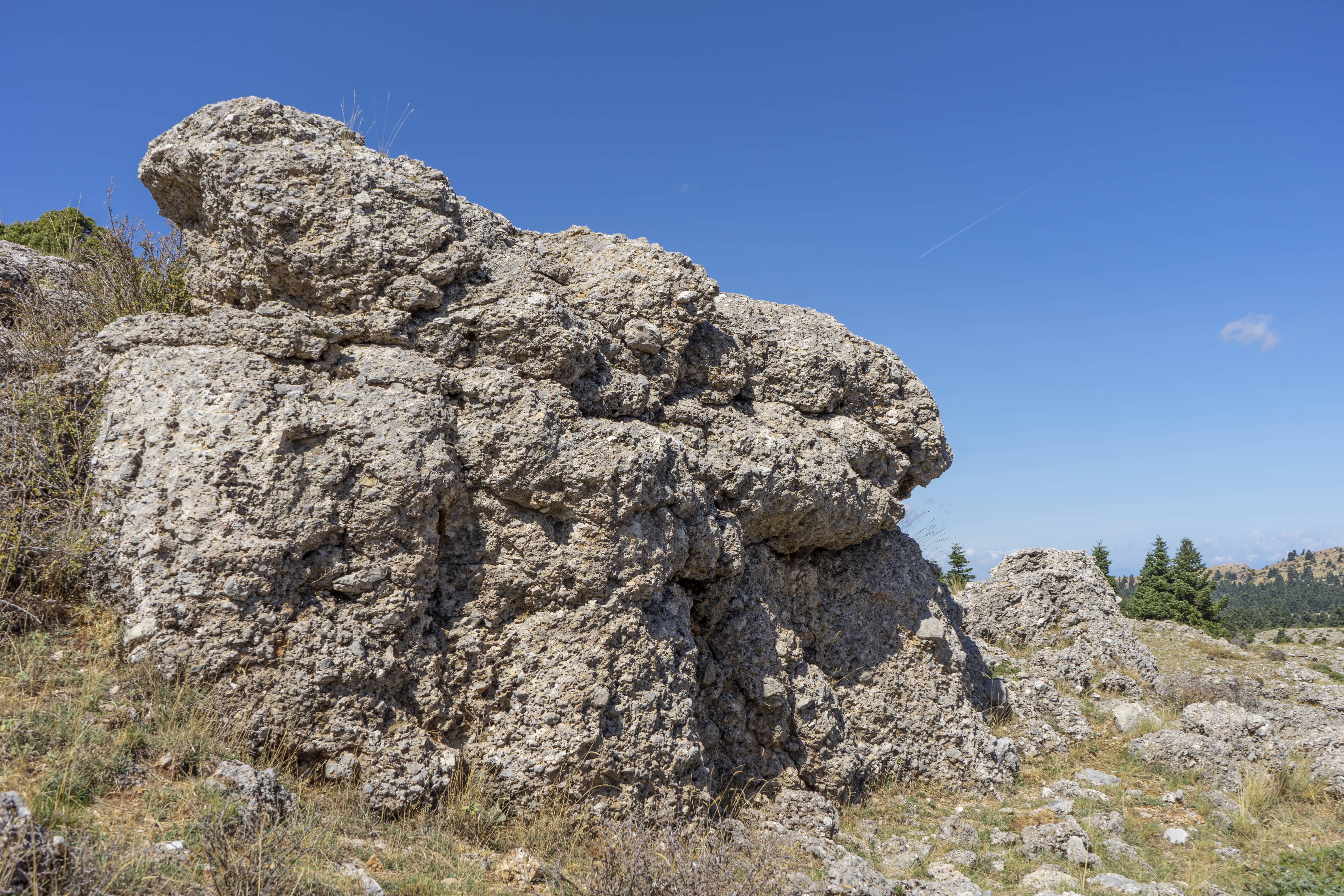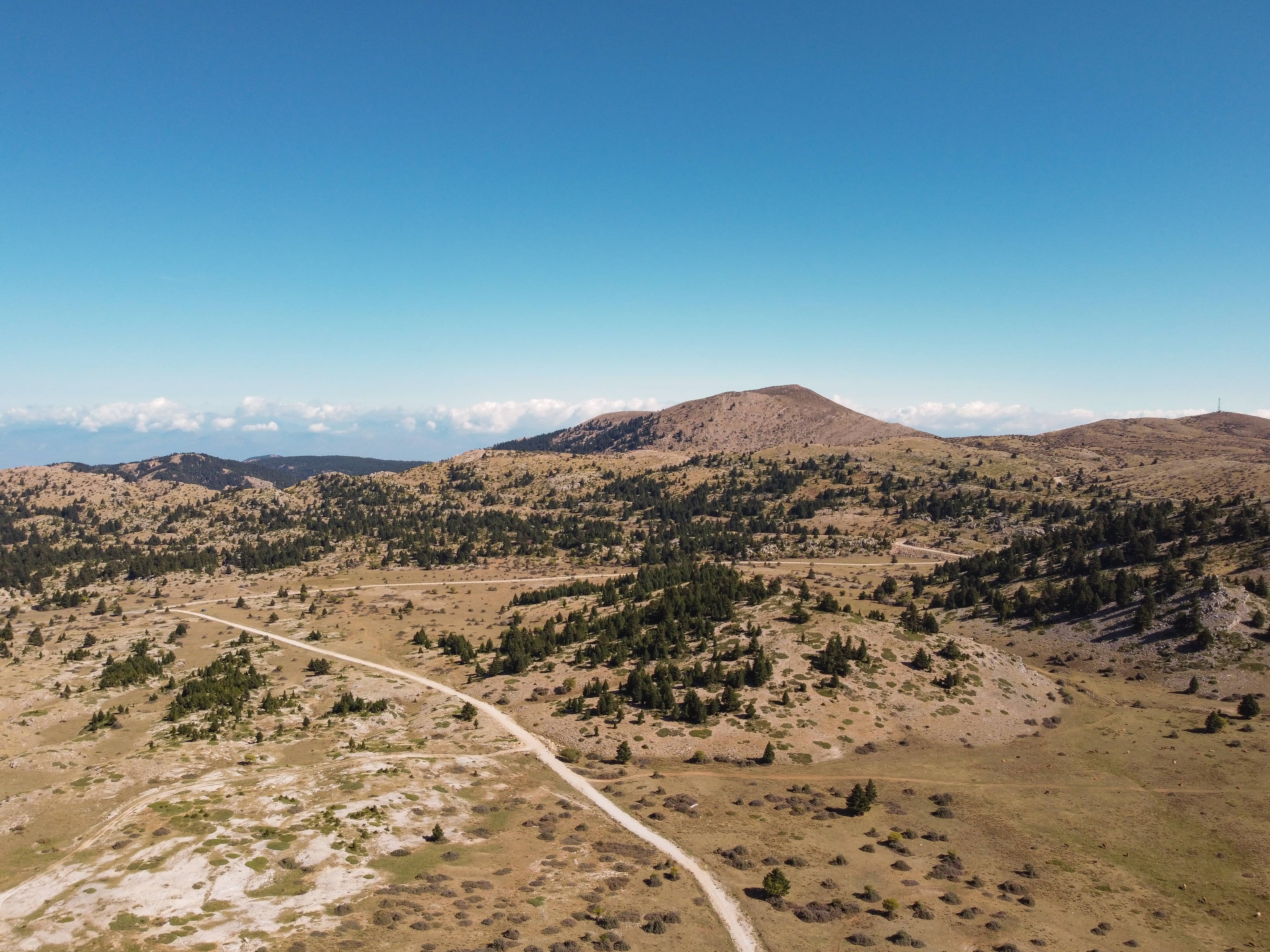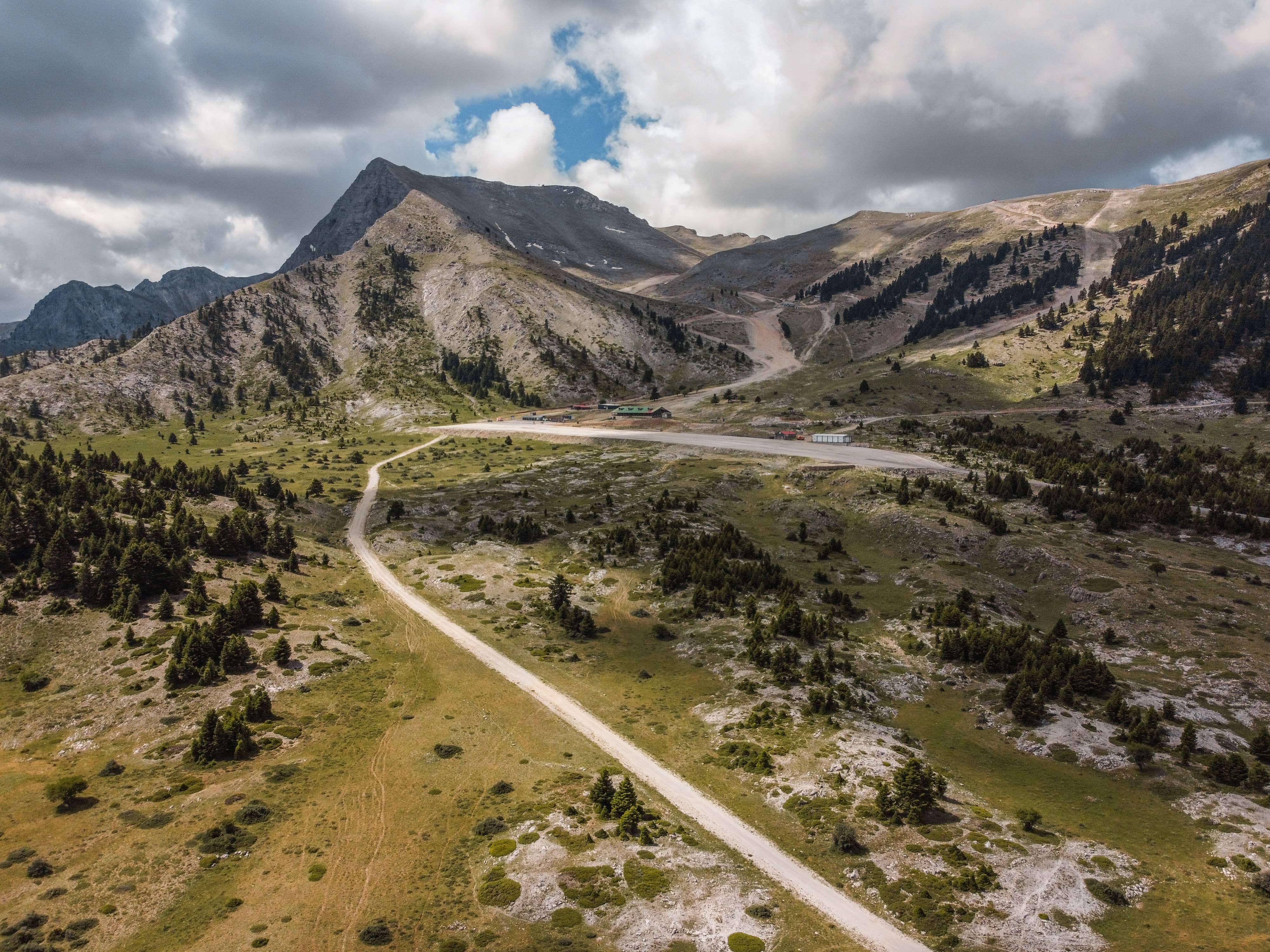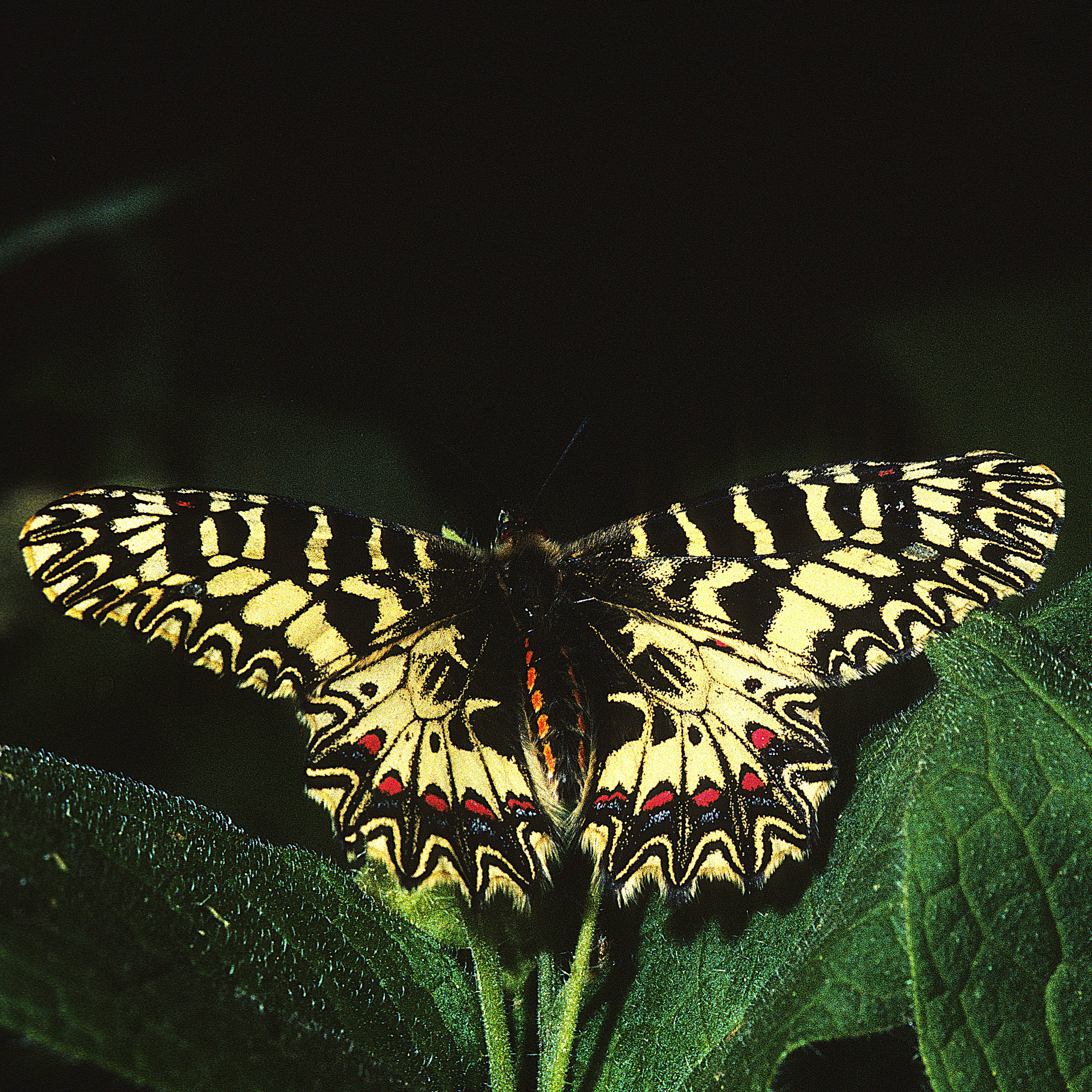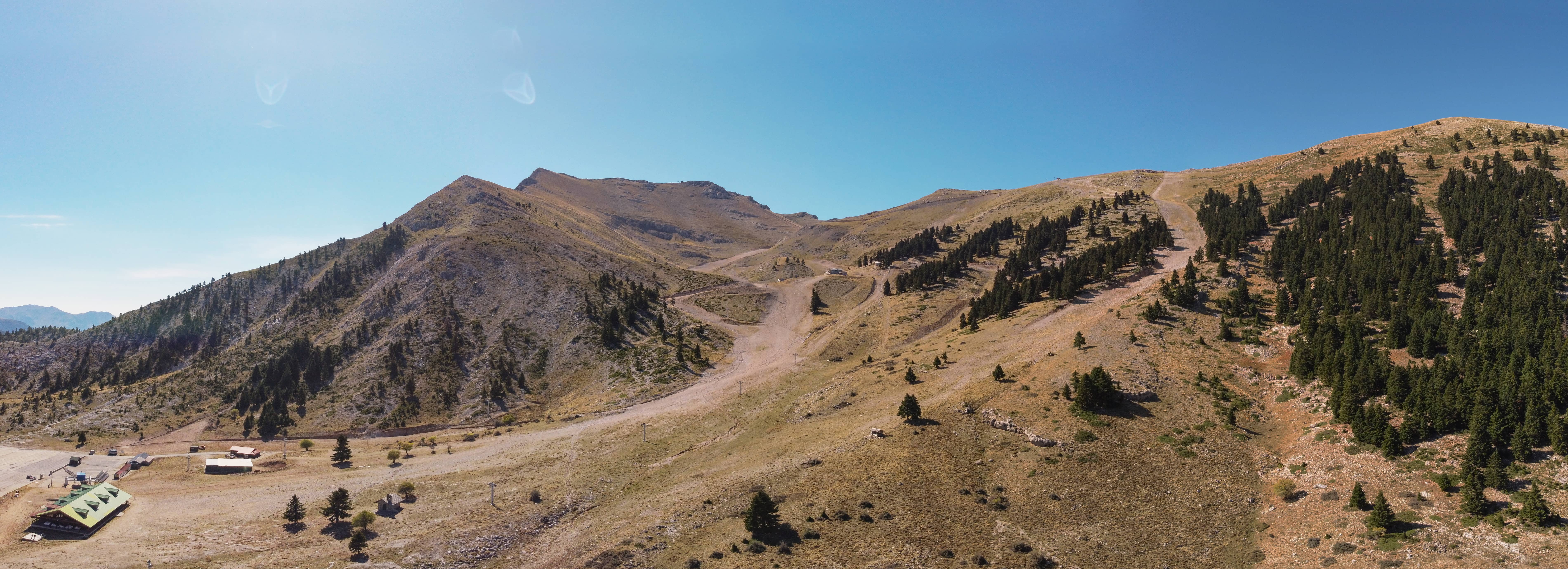FROM THE ICE AGE I
Mount Chelmos is one of the southernmost regions of Europe where glaciers developed during the last glacial periods, the signs of which can still be seen today at the slopes of Chelmos Mt.
One of the glacial valleys of Chelmos is the valley that ends up in the area of Xerokampos.
The area of the “Xerokampos ice breccia” geosite, like the entire area of the geopark, played an important role during the Second World War. Due to the high altitude and the special geomorphological relief, the valley of Xerokampos was a location for the installation of resistance troops and was considered suitable for resuppling by the allies forces. Despite this, the resupply was never performed and in this location on June 21, 1943 the battle of Chelmos took place.
GEODIVERSITY
Glaciers as they move slowly downwards, like rivers in slow motion, dig and break the rocks on which they slide on. Pieces of these rocks of various sizes are carried by the glacier and can be moved for quite long distances, while at the same moment they are being worn down, taking on a more rounded shape. When these pieces are numerous, they form a layer under the moving glacier. Scattered rounded boulders of glacial origin are found there, as well as a thin layer of ice breccia at this geosite. These rocks are the marks of the glaciers that once flowed there.
BIODIVERSITY
The geosite is located within the Protected Area “MOUNT HELMOS & YDATA STYGOS” (GR2320002) of the Natura 2000 network. Both the flora and fauna of the area are of exceptional ecological importance. It is considered one of the most important areas in Greece for butterflies, as it hosts a large number of rare and endangered species. Some of them are protected by national and European legislation, while others are in the “Red Book of Threatened Animals of Greece” (e.g. Polyommatus iphigenia, Turanana taygetica). In addition, endemic species of the Peloponnese such as Globularia stygia and the near-endangered endemic Gymnospermium peloponnesiacum grow. Its ornithological value is considered excellent.
The area is located within the Special Protection Area (SPA) for avifauna “OROS CHELMOS (AROANIA)-FARANGI VOURAIKOU KAI PERIOCHI KALAVRYTON” (GR2320013). The avifauna of the area is of great interest and includes birds, such as the Golden Eagle (Aquila chrysaetos), and the Eurasian eagle-owl (Bubo bubo).

